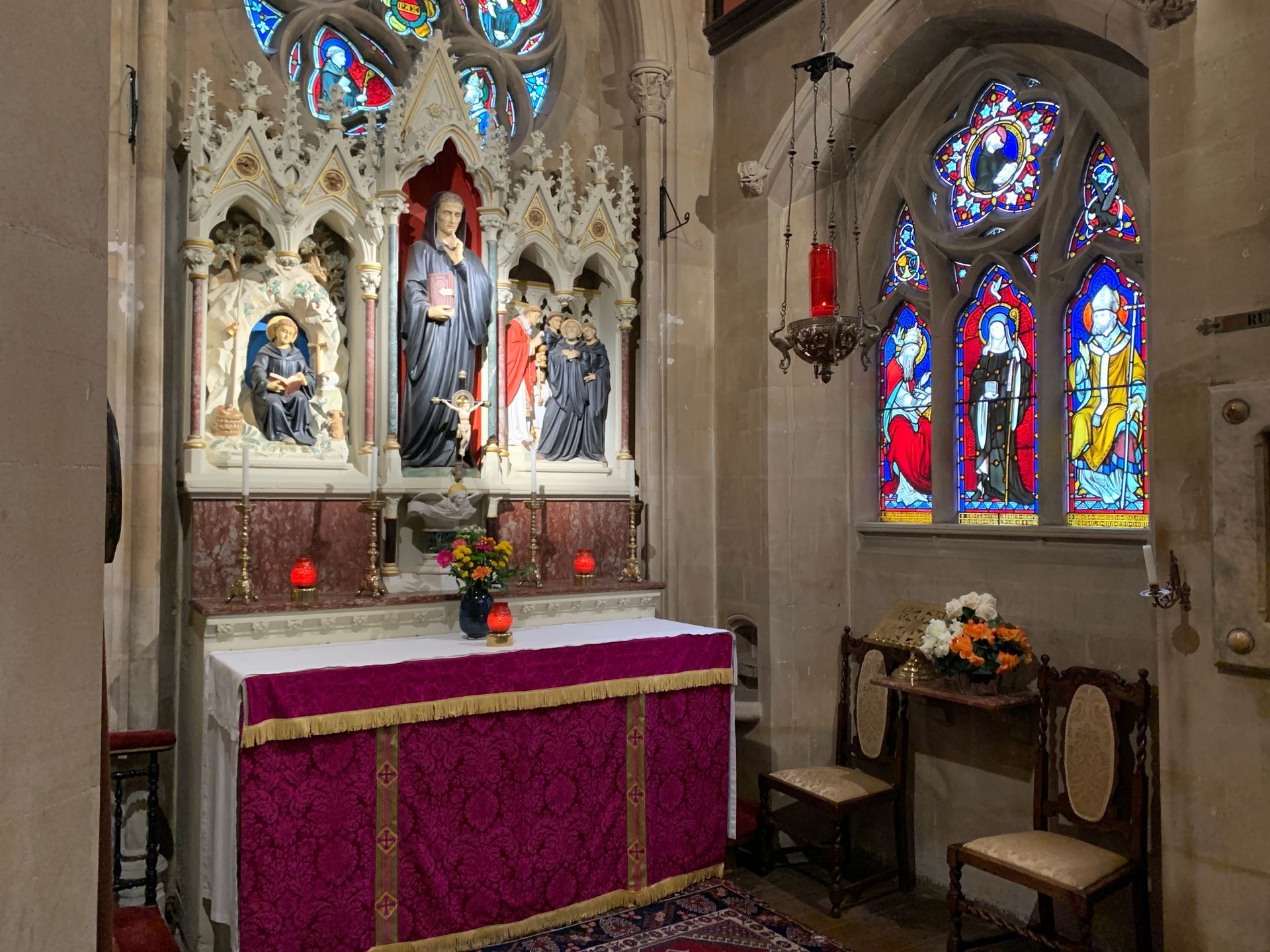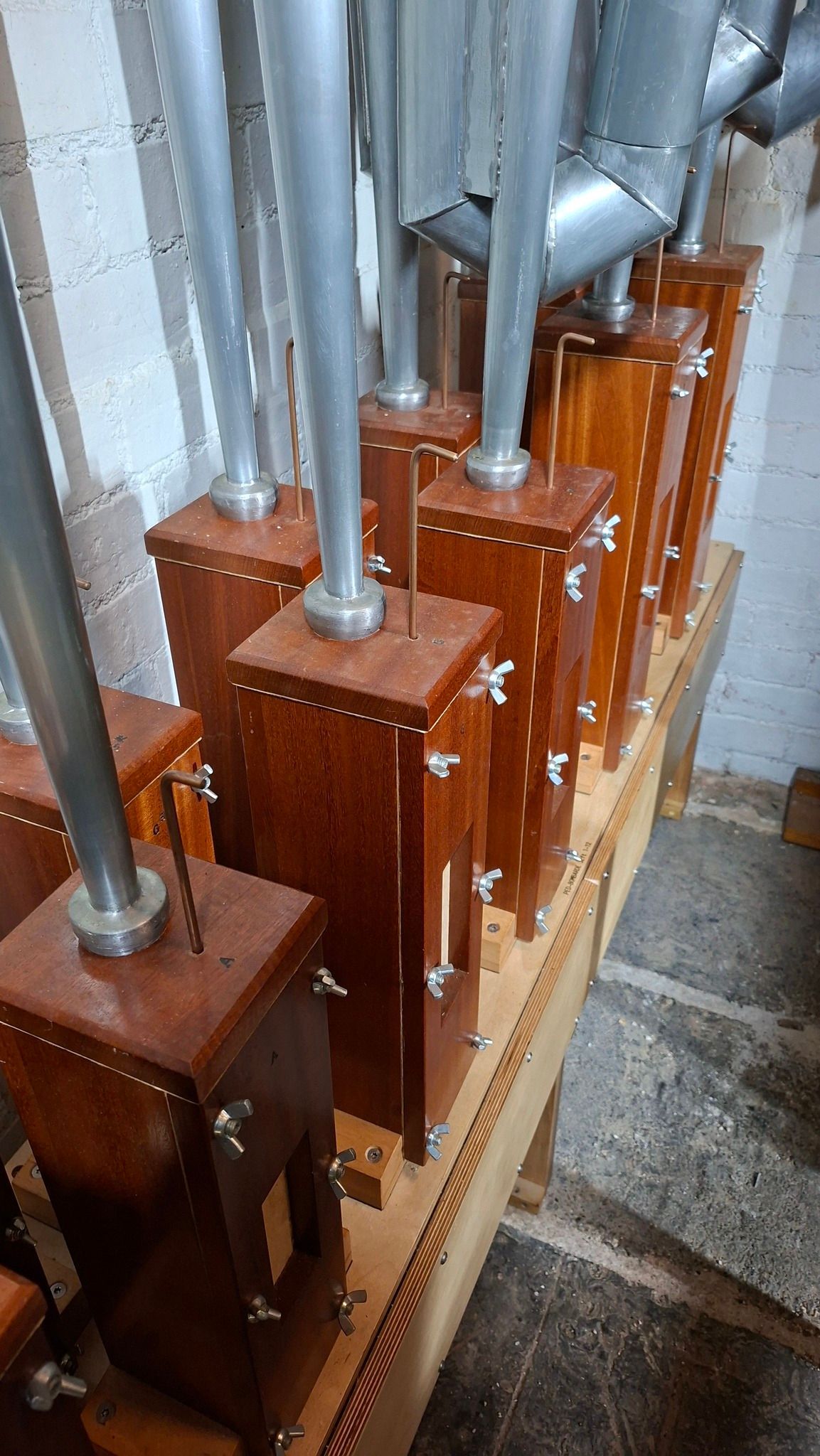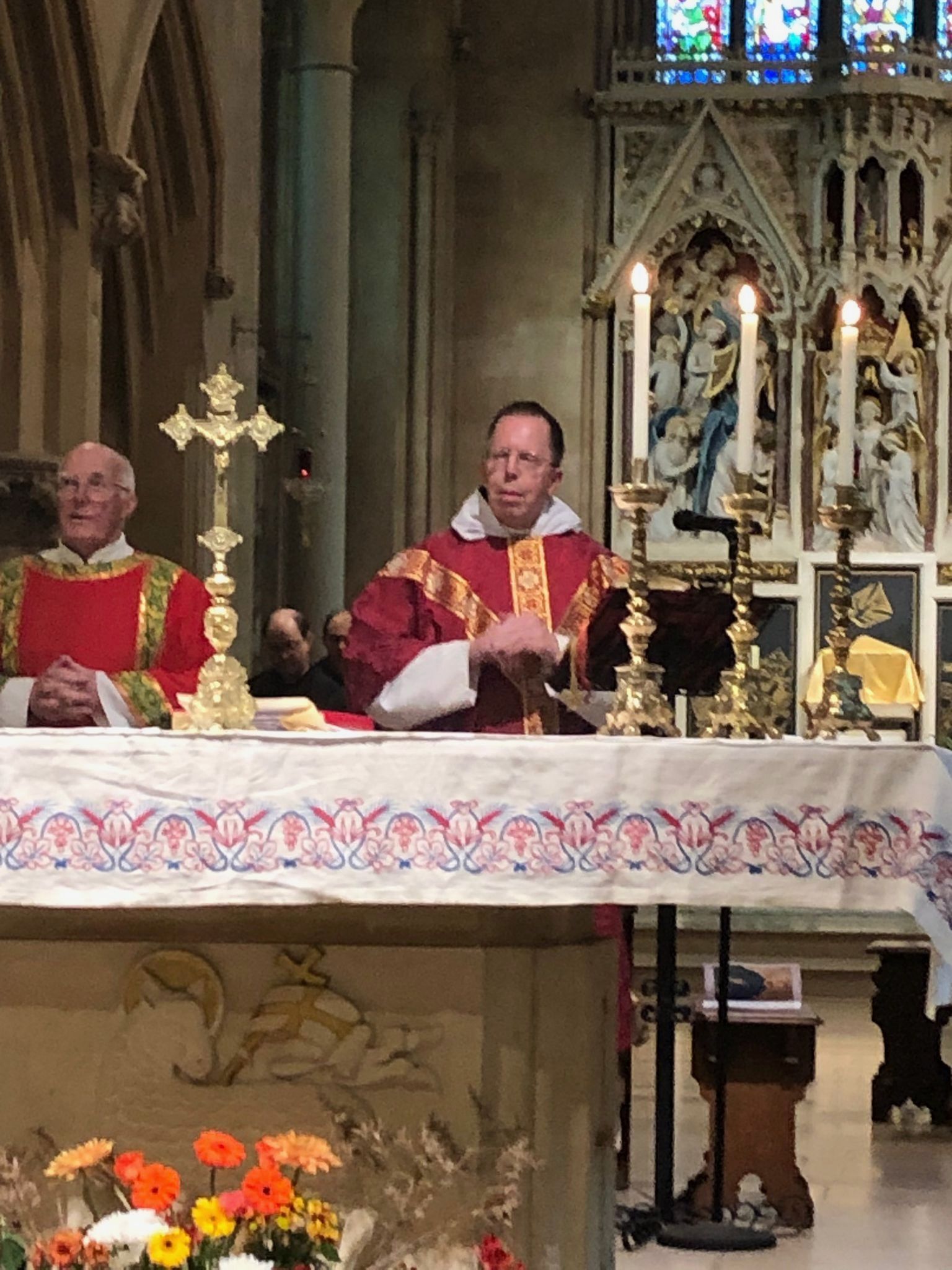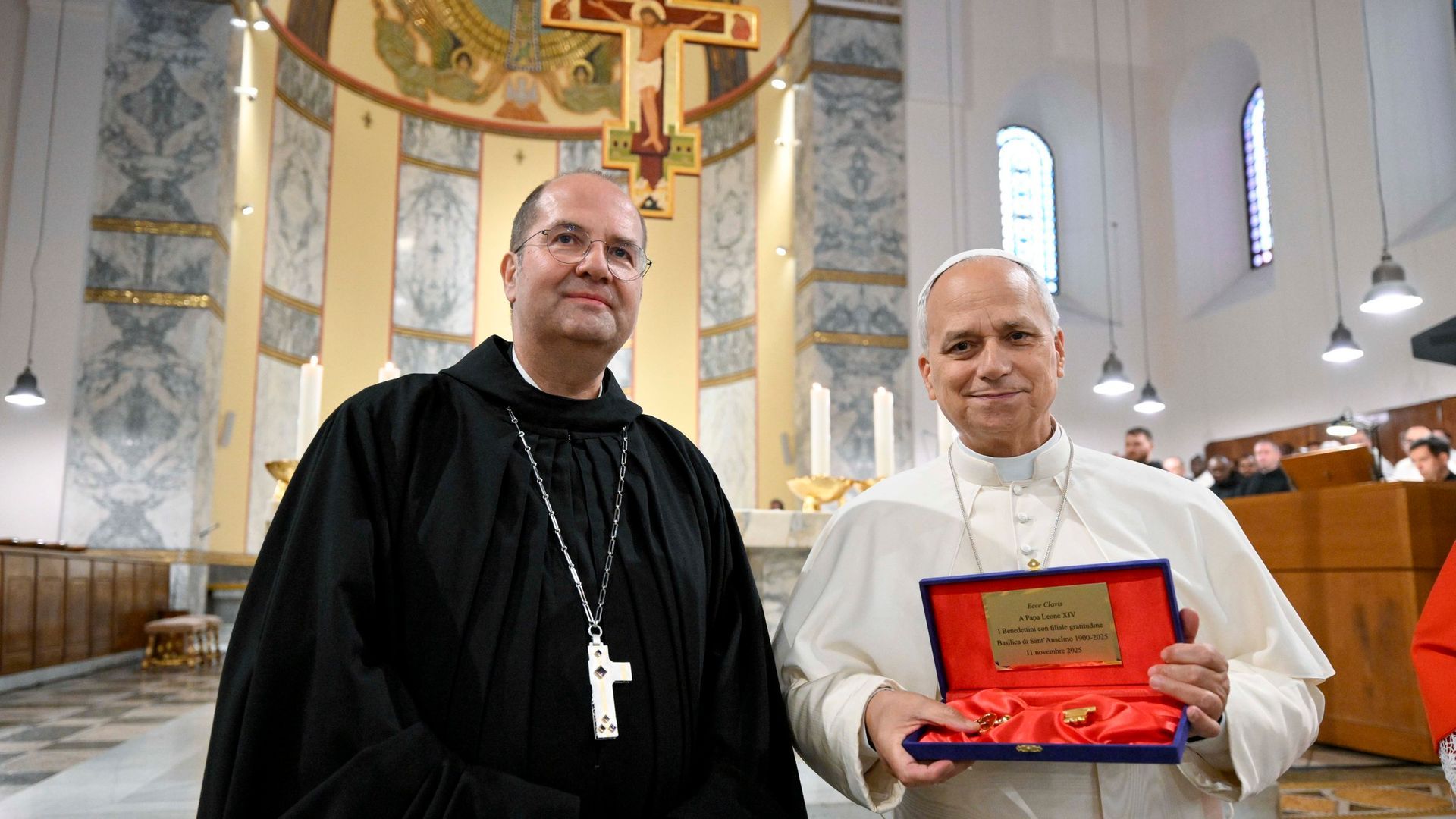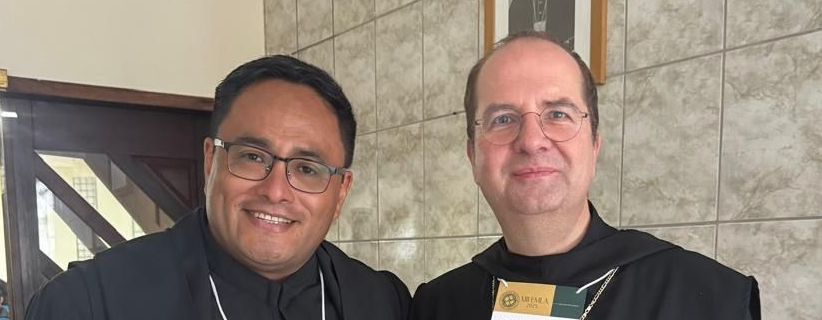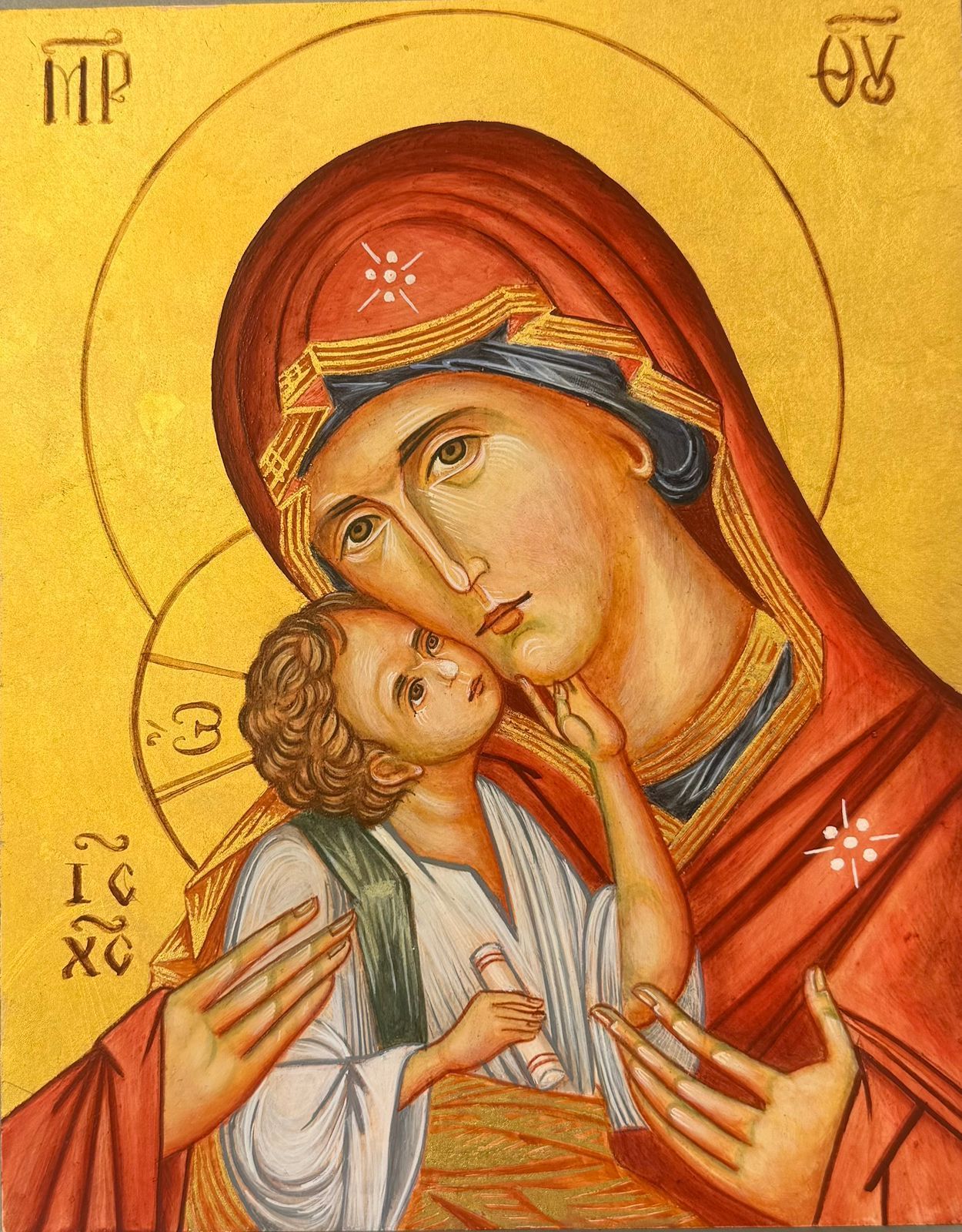Feast of St Benedict
Abbot Brendan's homily for the Passing, the "Transitus" of St Benedict
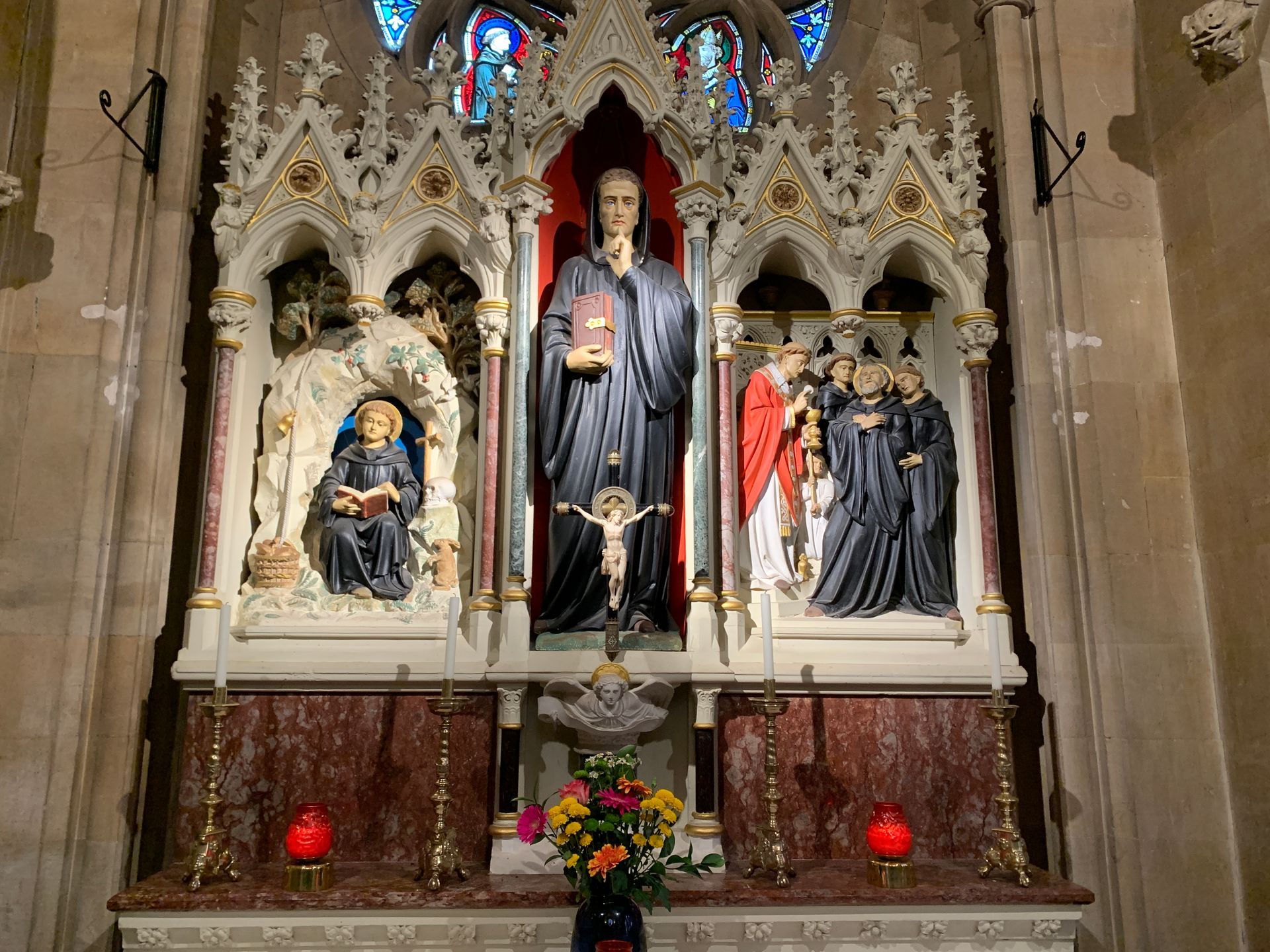
St Benedict's Chapel
Perhaps my favourite corner of this church is St Benedict’s chapel, looking particularly lovely today with candles and flowers. Behind the altar St Benedict looks down on us holding his Rule. It looks to be a large volume, but in truth is Rule is “little rule for beginners” just seventy-three short chapters. Yet it has had an enormous influence. It has shaped civilization, made saints of sinners, and daily invites us to listen to the voice of God, a Father who loves us, and daily sing his praises. It is a Rule that guides us still with that quality that St Gregory the Great identified: discretion. It is wise and humane. Benedict is still a sure guide.
Either side of Benedict above the altar is a diptych, two panels showing the beginning and end of the Saint’s monastic life.
On the left we see Benedict in his narrow cave of Subiaco where he first learnt to seek God. You can still visit the Sacro Speco, the Holy Cave. Benedict chose a narrow cave, in a narrow valley as the place to go into himself. The path is narrow at the beginning he tells us in his Rule. We need a degree of asceticism, restriction, of narrowness in order to fully flourish. We need solitude and silence to more fully know ourselves. There is a basket of bread, let down by a rope – pasta had not yet been invented. But Benedict seems more intent on the Word of God he holds in his hand. Man does not live by bread alone. “What page, what passage of the Old and New Testaments is not the truest guide to human life.” (RB:73)
Momento Mori
Alongside him is a skull. Many artist have shown saints with skulls, but it is not to be something gruesome but a momento mori, a simple way of reminding us that Benedict taught us to “keep death daily before our eyes” (RB 4:47). Not as a threat, but as a truth. He calls death to mind so that we may live rightly, so that when our own transitus comes, we are not caught unprepared. “Run while you have the light of life, that the darkness of death may not overtake you.” (RB Prol. 13)
His Rule is not just about how to live, but how to die—how to die daily to self, and how to live well so that we might die well, in communion with our brethren, in communion with God.
The Death of St Benedict
The other panel shows Benedict at the moment of his passing. St Gregory the Great describes it beautifully in his dialogues:
As the illness grew worse every day, he asked his disciples to carry I him into the oratory. There he strengthened himself for his departure by receiving the Body and Blood of the Lord. While the hands of his disciples held up his weak limbs, he stood with his hands raised to heaven and breathed his last breath amidst words of prayer.
It is an image of perfect communion. What a glorious end to a life lived well. Benedict is at one with God, receiving Christ in the Eucharist. Benedict is at one with his brethren, supported by them as he knew we always needed to be. It is like Aaron and Hur holding up the arms of Moses as he prayed. We join monasteries or go to church because we know we cannot go it alone we need the support of others. We need others to carry us when we are weak, and we rely on the strength of others.
That image is an icon of our monastic life. Isn’t that what our monastic life is about: supporting each other to sing the praises of God? Is not our communion with each other so that we may be brought into full and perfect communion with our gracious God? And doesn’t the grace of God help us to love each other?
And yet, even in this, he stands as a monk before God. He dies standing, supported by his brothers, but still on his own feet, still lifting his hands in prayer. He does not shrink from death but faces it in the posture of a man who has spent his life seeking God. This is a powerful image. We are called to meet the Lord not with reluctance, not clinging to this world, but standing, ready, with hands uplifted in prayer.
Today as celebrate the Transitus—the Passing of Benedict from this world to the next, we are not just remembering his death, rather it is feast of fulfilment, drawing life from the Paschal Mystery of Christ who constantly draws us from death to life.
Benedict’s Rule is about life—life in abundance, life shaped by community, stability, conversion. But it is a life that is always moving toward God. And so, in a sense, Benedict’s whole monastic life was already a passing over, a daily transitus of self-will, of personal ambition, of attachment to anything that is not Christ.
St Benedict, keep us on the path of life, help us to run along with path of life with the delight of love.
